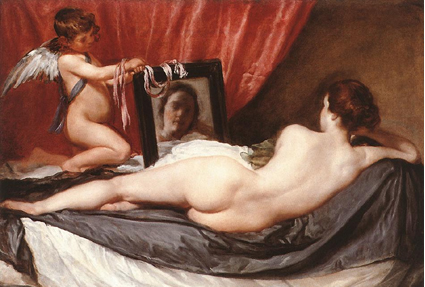The National Art-Collections Fund is a hundred years old and this week’s picture has been chosen to mark the centenary. The Toilet of Venus, or so-called “Rokeby Venus”, by the seventeenth-century Spanish painter Diego Velazquez, was one of the first and most notable acquisitions made for the nation under the auspices of the NACF. It was purchased in 1906 for the then astronomical sum of £45,000 and donated to the National Gallery in London, where it can still be seen today.
Few painted ladies have led as peripatetic a life as Velazquez’s delectable, pearly-skinned Venus. Commissioned by Gaspar Mendez de Haro, volatile and hellraising son of the chief minister to Philip IV, King of Spain, the picture was owned by a succession of Spanish nobles before winding up in Britain in the early years of the nineteenth century as one of the spoils of the Peninsular War. Soon afterwards it was bought by John Bacon Sawrey Morritt of Rokeby Park in Yorkshire, a classical scholar and member of parliament now principally remembered as a friend of the novelist Sir Walter Scott. Morritt wrote Scott a gleefully mischievous letter about his new purchase: “I have been all morning pulling about my pictures and hanging them in new positions to make room for my fine picture of Venus’s backside which I have at length exalted over my chimney-piece in the library. It is an admirable light for the painting and shows it to perfection, whilst raising the said backside to a considerable height the ladies may avert their downcast eyes without difficulty and connoisseurs steal a glance without drawing said posterior into the company.”
Velazquez’s Venus only became truly world-famous after it was acquired by the National Gallery. But its newfound celebrity was not an unmixed blessing, as The...


